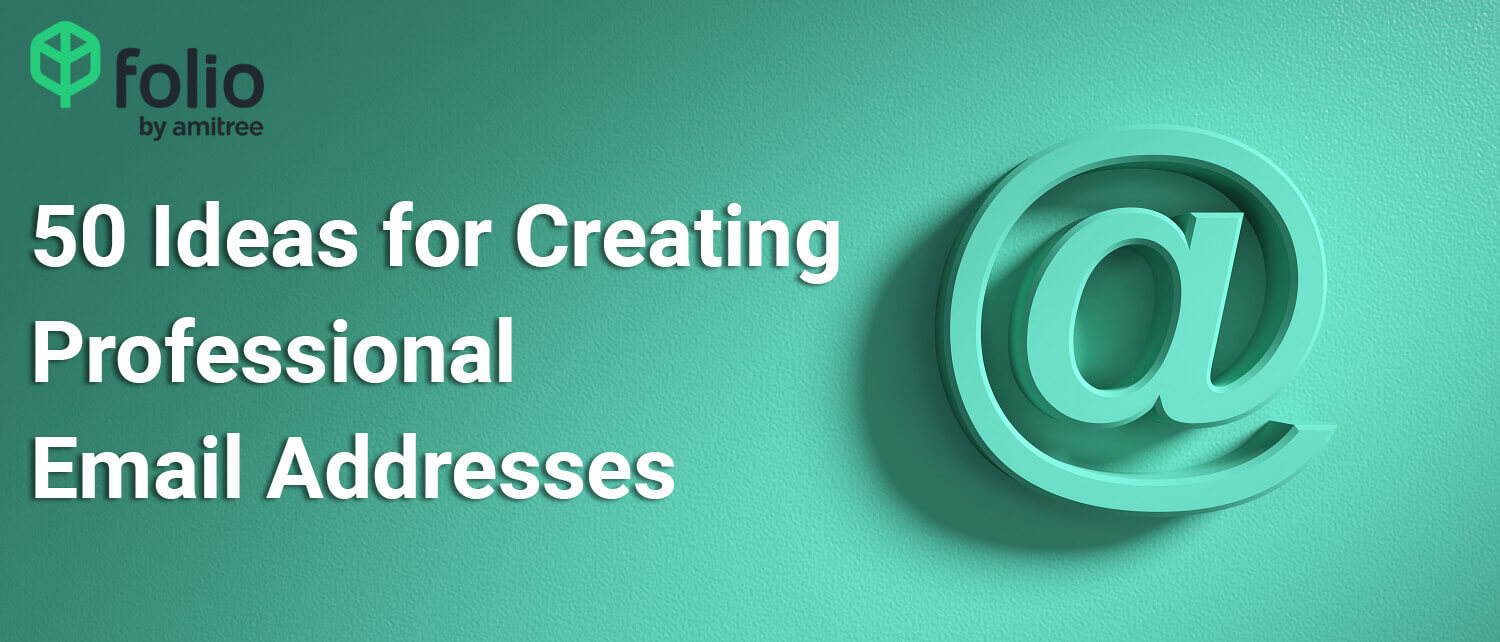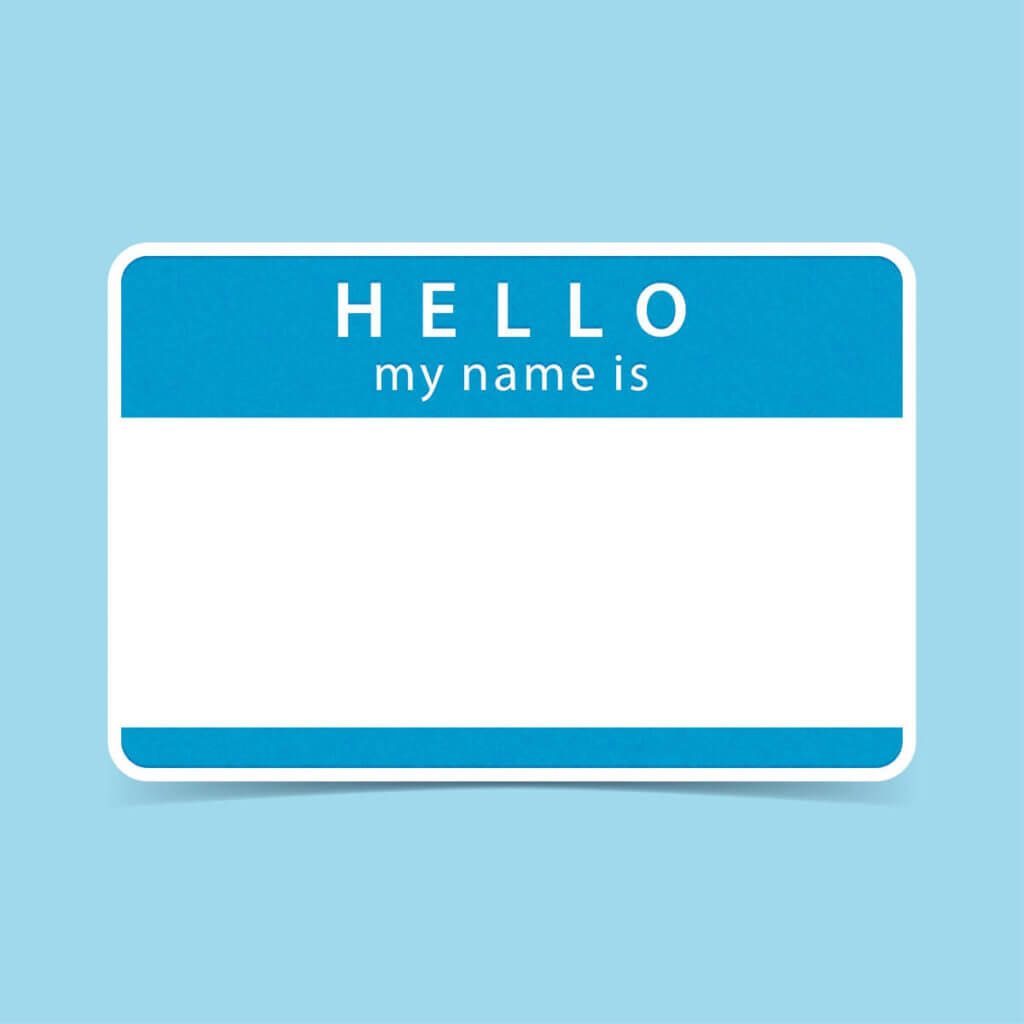
Though it’s rarely discussed, having a professional email address matters, helping you make the right first impression, whether you’re applying for a job, prospecting for clients or hearing from customers.
Like everyone, you probably already have at least one email address, but worry it’s not the right choice for corresponding with your professional contacts. Maybe it’s too informal, too personal, or you’ve just outgrown it.
It can be tricky to set up a professional email, either for yourself or your business. Maybe this is your first time trying to pick out your own formal email address or you’re just not feeling very creative.
To help, we’ve gathered 50 ideas for creating a professional email address, plus tips on what makes a great email address and how to set one up.
What Makes a Professional Email Address Great
For many people, a great email address is one that just has a nice ring to it. Something about it just makes it a natural and obvious but also original choice.
Every email address has three parts:
- The local-part – A personalized username at the beginning of the address and the name of your unique mailbox.
- The @ symbol – A standard piece of email syntax read as “at” and that stays the same for all email addresses.
- The domain name – A destination mail server web address such as “Gmail.com” or your own custom domain.
The best and most professional email addresses will read well all the way through. Your personalized choice of email username will match well with the domain name you choose, whether it’s Gmail, Yahoo, or your own personal or business website.
How to Create the Most Professional Email Address

People, as well as businesses, can benefit from having a great email address. Highly creative professional email addresses can grab attention, open doors and tell a story.
A good email address will be:
- Short. A good email address shouldn’t be so long that it’s hard to type.
- Simple. An email address should be simple and straightforward.
- Pronounceable. An email address should be easy to say so you don’t have to spell it.
- Trustworthy. An email address should have a name and domain that inspires trust.
- Memorable. A great email address should be memorable as well as professional.
The trick is in figuring out how to come up with one of your own, which isn’t always easy.
Staring at the email signup screen it can be hard to know what username to choose for a formal email address. Personal details and inside jokes are out. But it’s still necessary to be creative enough that you can get a professional email address that’s available.
Luckily, there are some established formats you can try out to find the right email address. Options abound for playing with your real name, as well as creating unique and interesting usernames. You can also choose a format for email addresses at your business that grows with your company. Here are some ideas to get you started.
50 Email Address Ideas For Professionals
This list of email address ideas for professionals should give you lots of options that work and are available. It’s a good idea to jot down a few of the best possibilities first, then see what’s available on Gmail, Outlook, or your own domain of choice.
For this list, let’s take an imaginary person with the name “James Peter Marten” as an example for some personal professional email addresses as well as some ideas for business email addresses.
Imagine that James already has a personal email address called “guitarplayer007” that he created in college and uses for emails with family and friends. It’s perfect for those who know him, but not for those who don’t.
James also has an email at his day job, “jpm473,” but he knows he shouldn’t use that address for his personal career development. So he needs to pick something new.
Here are 50 potential ideas for creating a professional email address that James could use.
1. First name + last name.

First and last name combination is a top a choice. But “jamesmarten” is probably a little too common to be available on big email domains like Gmail, so you’ll have to get creative.
2. First initial + last name.
This address is a classic format. “jmarten” is short and professional. The only question is whether there could be other “jmartens” on the same email server.
3. First name + last initial.
A combo like “jamesm” is another option. Good for when you’re the only “jamesm”
4. First initial + last initial.
The very short “jm” could work in some cases. But it won’t be available on big email domains and some servers are set up to require email addresses to be longer.
5. First name + middle name + last name.
Adding in your middle name gives you more options. One contender is “jamespetermarten.” It’s very specific, but a bit long.
6. First name + middle initial + last name.
“Jamespmarten” is another classic format.
7. First name + middle name + last initial.
“Jamespeterm” is another choice for formal email address.
8. First initial + middle name + last name.
If you happen to go by your middle name, a combo like “jpetermarten” would be great.
9. First initial + middle initial + last name.
If you are known by your initials, “jpmarten” could be a good choice.
10. First initial + middle initial + last initial.
Using just the initials “jpm” would again be too short and generic for a lot of bigger email hosts.
11. First name + last name + number.
If you have a really common name, adding a number may help you get the address you want, such as in “jamesmarten123.”
12. First initial + last name + number.
“Jmarten123” is another option.
13. First initial + last initial + number.
The combo “jm123” might still be too short for some email services. Google addresses, for instance, require at least six characters.
14. First initial + middle initial + number.
With “jp123” you get a nice rhyme, but it still may be too short and generic.
15. Name + periods.
You could also add periods. A combo such as “james.p.marten” can be a good option for better readability. Just remember there are special usage rules to follow for periods when you’re creating a professional Gmail address.
16. Nickname.
If you go by a nickname such as “Jim,” “Jimmy,” “Pete,” or “Petey,” you could use it for email.
17. Nickname + last name.
A choice like “jimmarten” or “peteymarten” is natural if you go by such a nickname.
18. Shortened name + last name.
If you go by a shortened name such as “Pete” for “Peter,” an address such as “petemarten” could work.
19. Last name + first name.
Often email addresses will reverse the order of things and put your surname first. Consider “martenjames” as an option.
20. Last name + first initial.
Another reversal is “martenj.”
21. Last name + first initial + middle initial.
The combo “martenjp” has a nice ring.
22. Last name + first name + middle initial.
The username “martenjamesp” gives a bit more info.
23. Job title.
In certain situations, you can skip using your name for an email address and still sound professional by using your job title. “CEO” or “owner” can work when you have an email domain for a business you own, as in “ceo@mycompany.com.”
24. Job title + name.
Adding your name to a job title makes sense in some email address situations, such as “ProfessorMarten” or “DrPete.” However, you don’t want to fence yourself in with a job title you may outgrow, like “jpmartenreceptionist.”
25. Qualifications + name.
Adding your qualifications to an email address is another option, as in “jamesmartenphd” or “jpmartencpa.”
26. Name + city.
Sometimes it can make sense to feature your location, as in “jamesinketchum.” Particularly good if you’re the go-to person for that locale in an industry like real estate or photography.
27. Name + state.
You could also think bigger than a town or city and claim a whole state, as in “idahojames.”
28. Name + neighborhood.
Or go small and combine your name with a neighborhood, as in “jamesineastlake” or “jpmartenupperwestside.”
29. Name + region.
There’s the possibility of choosing a regional name, like “floridakeysjames” or “catskillsjames.”
30. Name + landmark.
Landmarks can also combine with names, as in “miraclemilejames,” “capitolpete,” or “alamojames.”
31. Name + industry.
If you’re a professional in your industry, you could create an email address such as “jpmartenrealestate,” “martenfinancialservices,” or “jmartenphotography.” Just don’t make it too repetitive, as in “jpmartenrealestate@jpmartenrealestate.com”
32. Name + company.
An email featuring your name and company is possible, such as “jpmartenweddingphotography.” Again, avoid repetition in the domain name with this pairing.
33. Company + location.
Company and location email addresses are good when you have multiple locations, as in “martencompanyeast.”
34. Brand name.
Brand names are also possible as email address formats, for example “martenvineyards.”
35. Product name.
A product can also become an email address, as in “finewines@martenvineyards.com.”
36. Department.
When you have your own business, it makes sense to set up more than one professional email account. It helps funnel inquiries to the right department and look more professional, with email addresses such as “sales,” “customerservice” and “pr.”
37. Sales department alternatives.
A lot of trendy businesses like choosing department names that are more original sounding. In this case, you could use “growth” or “profits” for your sales department email.
38. Customer service department alternatives.
As an alternative to having senders email “customerservice,” they could email you at “support” or “help.”
39. Communications department alternatives.
For alternatives when it comes to a communications department, try “pr,” “press,” “media,” or “inquiries.”
40. General department alternatives.
Sometimes you need to think about setting up a professional email address that will receive general inquiries. Try options such as “questions” or “info.”
41. Role.
At times, you’ll want a professional business email address focused on the job role of the person who answers it, like “webmaster” or “mediainquiries.”
42. Purpose.
An email address can also be related to its purpose within your company, as in “questions,” “info,” or “careers.”
43. Greeting.
Some companies like to create a general email address that uses a greeting like “hello” or “hi.” It’s a friendly choice.
44. Vision or mission.
With a company email, you may want to format a more creative address that focuses on your vision or mission. For instance, if James owned a dog grooming business, he could choose an email such as “happydogs@martendogcare.com.”
45. Core values.
Some businesses will create an email address that addresses the core values of their company. For example, imagine a customer service email address named “constantimprovement.”
46. Feature or benefit.
A creative email address can also emphasize a feature or benefit of your products or services. For example, if James were in real estate, he could choose an email like “homesalesexpert.”
47. Promise.
Another creative idea for a professional email address is to emphasize a promise made to clients or customers, such as “greatprice,” or “fastclosing.”
48. Corporate Mascot.
If your business has a well-known company mascot, like “TonyTheTiger” or “ColonelSanders,”
you might consider an email address using the name.
49. Company Founder.
As a company founder, you may want to consider having a public email address. While you may not monitor it 24/7 like Jeff Bezos does with his “jeff” account, it can give customers the sense you’re available to help.
50. Play on Words.
Under the right circumstances, a pun or play on words can work, even for a professional business email address. For instance, if you were in the mattress business, it would be fine to send your monthly newsletter from an email account called “snoozeletter.”
Final Thoughts
With your new email address, you’re bound to get a lot of new email. Keeping it organized can be struggle.
To avoid new email overload problems, get the Folio email add-on for you Gmail or Outlook inbox.
Folio’s smart AI-powered algorithms can take care of organizing your emails so you don’t have to, saving lots of time and hassle.
Click here to try Folio today to keep your new professional email address inbox neat and tidy.
Who we are
We've built Folio: the first AI email assistant for professionals.
Folio plugs directly into your work email inbox and automatically organizes your email, giving you contextual access to all the information you need to increase your productivity in minutes.
We are a team of passionate product people and engineers that gets excited about solving complex processes and creating value for people.
We're a venture funded company backed by Accel Partners, Vertical Venture Partners, and other leading venture capital firms and angel investors such as Ash Patel and Jerry Yang.

